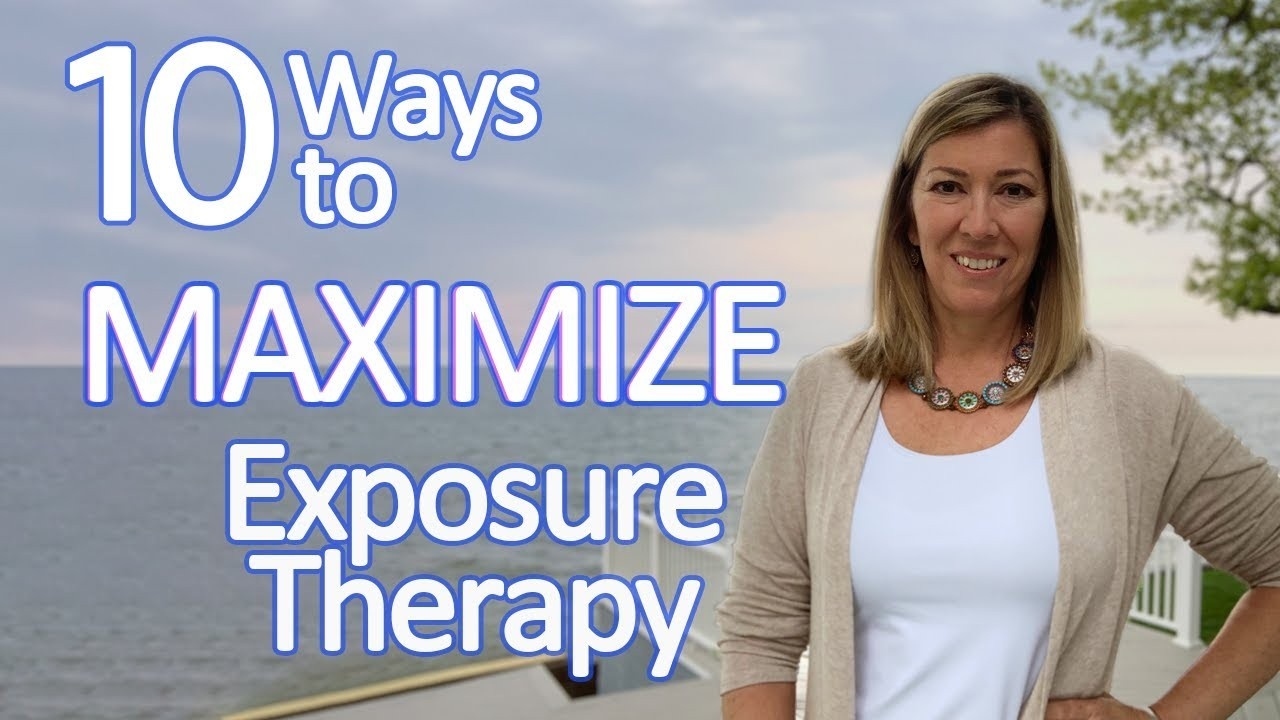
10 Ways to Maximize Exposure Therapy (ERP)
Exposure therapy is a widely recognized and effective treatment for various anxiety disorders such as panic disorder, OCD, social phobia, other phobias, agoraphobia, and PTSD. However, it's not uncommon for exposure therapy to fail or for its effects to diminish over time. In this blog post, we'll explore why exposure therapy may not always work and delve into ten crucial tips to ensure your exposure therapy sessions are as effective as possible. These tips are based on recent research and expert insights in the field of anxiety disorders.
Therapy Results:
Exposure therapy doesn't always succeed, and research suggests that it fails for around 40% to 50% of individuals. This means that despite undergoing exposure therapy, a portion of people may not experience the desired improvement. Additionally, original fears and symptoms can return, ranging from 20% to 62% of the time (as stated by M. Craske in the Stockholm Psychiatry Lecture Series 2014).
Understanding Exposure Therapy: Exposure therapy is a technique used to treat anxiety disorders, such as phobias and PTSD, by gradually exposing individuals to their feared situations, objects, or thoughts. This exposure helps the brain learn that these feared elements are not as dangerous as previously believed. The brain creates new neural pathways that counteract the fear response. However, the old neural pathways responsible for the initial fear do not disappear. They remain intact and can regain strength if not actively countered. This is why it's important to continually reinforce the new pathways created through exposure.
Factors That Can Undermine Exposure Therapy:
Time Gap: If individuals don't continue exposing themselves to their fears over time, the newly formed neural pathways can weaken and fade, allowing the original fear pathways to resurface.
Contextual Specificity: If exposure is only practiced in specific context, the learning might not generalize to other similar contexts. Varying exposure across different situations is crucial to ensure a broadened response.
Unexpected Trauma and Negative Events: Unforeseen traumatic experiences, negative events, or personal losses occurring after exposure therapy can trigger a resurgence of anxiety symptoms. The new neural pathways might not be strong enough to counteract these external triggers.

Nothing is worse than feeling unsafe in your body, like you are a victim of your fear and not in control. You have come to the right place. Learn how to take back your freedom from high anxiety, bodily sensations and panic.
10 Ways to Maximize Exposure Therapy:
1. Violate What You Expect: One key element of effective exposure therapy is to violate your expectations. If you fear a panic attack at the grocery store, for example, expose yourself to that situation and challenge your fear. When your expectations don't align with the actual outcome (i.e., you don't experience a panic attack), your brain learns that the fear was unwarranted.
2. Vary the Context: Variety is essential in exposure therapy. Don't limit your exposures to one specific context. If you're afraid of elevators, for instance, expose yourself to different elevators, at various times of the day, with or without people present. This helps ensure a broader and more generalized fear reduction.
3. Schedule Exposures Strategically: It's beneficial to schedule exposures with breaks in between. A 10-minute break after each exposure session can help your brain consolidate new learning. Additionally, consider doing exposures in multiple shorter sessions rather than one extended session. Expose yourself to the feared situation before bedtime to leverage the brain's memory consolidation process during sleep.
4. Avoid Cognitive Therapy During Exposures: Cognitive restructuring, often associated with cognitive-behavioral therapy (CBT), can hinder exposure therapy's effectiveness. Avoid trying to change your thoughts or rationalize your fears during the exposure. Cognitive therapy is best reserved for post-exposure analysis, once the exposure therapy is entirely complete.
5. Vary the Stimulus: Expose yourself to different aspects of your fear. If you're afraid of spiders, don't limit your exposure to just one type of spider. Expose yourself to various types of spiders and different situations involving them. Mix up the hierarchy of fears to keep your emotions engaged and adaptable.
6. Label Your Emotions: Before, during, and after each exposure, label your emotions. Acknowledge and verbalize your fear and discomfort. This process helps you become more aware of your emotional responses and can assist in fear reduction.
7. Embrace Occasional Bad Experiences: Don't be discouraged by occasional setbacks during exposure therapy. These setbacks can actually be beneficial, as they teach your brain to tolerate anxiety and make your overall progress more robust.
8. Wean Off Safety Behaviors: While safety behaviors may be necessary at the beginning of exposure therapy, gradually reduce and eliminate them as you progress. Safety behaviors can impede the brain's ability to learn that the feared situation is not as threatening as initially believed.
9. Introduce the Phobic Stimulus Briefly: Thirty minutes before your exposure therapy session, briefly introduce the phobic stimulus. This can activate your amygdala, making the exposure more effective in reducing fear.
10. Verbalize and Review: After each exposure therapy session, take the time to verbally review what happened, what you feared, and what you learned. This verbalization reinforces your learning and solidifies the positive changes in your brain.
Exposure therapy can be a powerful tool for managing anxiety disorders, but its success depends on various factors. By implementing these ten tips, you can maximize the effectiveness of your exposure therapy and increase your chances of long-lasting positive outcomes. Whether you're working with a therapist or practicing exposure therapy on your own, these strategies can significantly enhance your progress and help you regain control over your life. Remember that exposure therapy may take time and persistence, but with the right approach, you can conquer your fears and anxieties.
Let's Keep in Touch
Subscribe to My Newsletter
We hate SPAM. We will never sell your information, for any reason.







